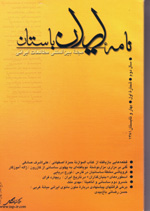|
WOMEN IN THE IRANIAN (PERSIAN) EMPIRE
Traditional Iranian Musical Instruments
In Search of Buddhism along Iran’s Silk Road
A joint team of Iranian and Japanese experts are setting off to find evidence of Buddhism along the Silk Road in Iran. Tehran, 22 August 2005 (CHN) – A team of Iranian and Japanese experts are planning to carry out surveys along parts of the Silk Road inside Iran’s borders to find evidence of the ancient religion of Buddhism. Buddhism has had great influences on Asian history, culture, and religions for thousands of years; today with its temples and rituals, it is still prevalent in many regions of Asia, specially Far East and India. The studies are proposed by Japan’s Nara International Foundation to shed light on Buddhism presence in Iran, along the Silk Road, throughout the history, which according to head of the International Affairs Office of Iran’s Archaeology Research Center, Karim Alizadeh, is a previously untouched domain. The Nara Foundation is a public-service corporation
established by the Governor of The joint team consists of experts from Iran’s Cultural Heritage and Tourism Organization (ICHTO) and four Japanese experts specializing in archaeology, anthropology, art, and civilizations studies. According to Alizadeh, the studies which will start in a few days time will take one month, during which the Iranian and Japanese experts will travel the country from East to West, passing through khorasan, Semnan, Tehran, Hamedan, Kurdistan, and probably Kermanshah provinces. In the past few years, Japanese archaeologists have been working along Iranian counterparts in different parts of Iran including the northern province of Gilan, and Fars, south of the country. CHN |



